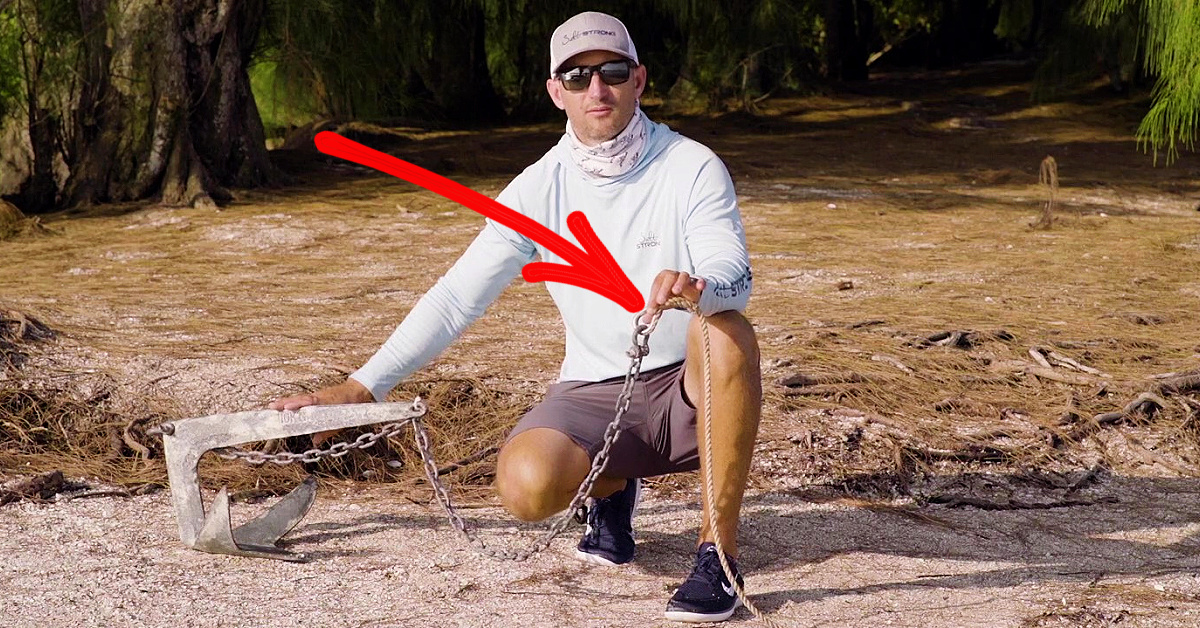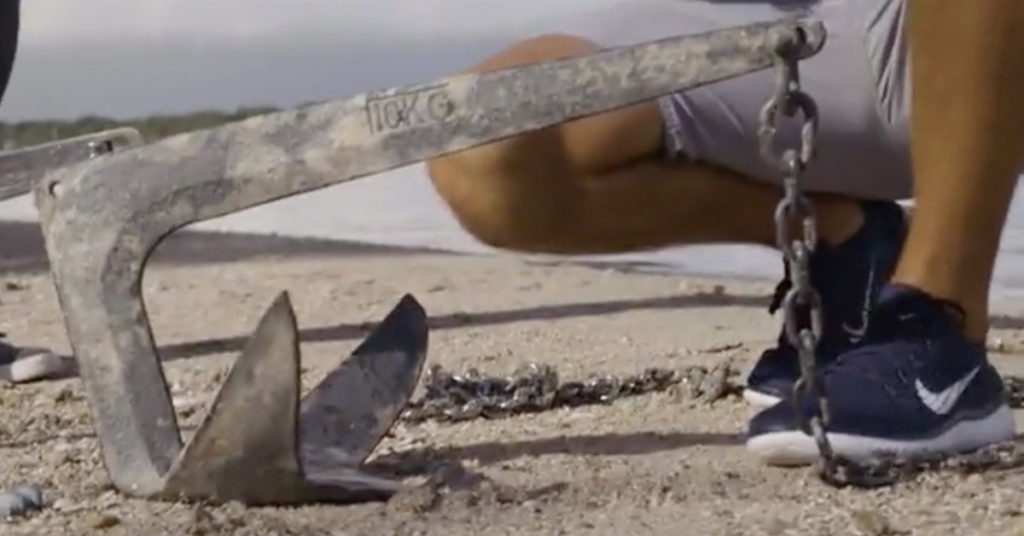The 3 Things All Anglers Need To Know About Anchoring
- By: Capt. Peter Deeks
- on
- Found In: Boat Anchoring, Boating Tips, Fishing Tips, Weekly Newsletter: 8-1-21

Anchoring can be simple.
But if you don’t have the right anchor with the right amount of rope, you may not hold the bottom or have the best positioning.
And as anglers, positioning is everything!
So in this new video from Capt. Peter Deeks, you’ll learn 3 important things every angler should know about anchoring.
Check it out below!
Boat Anchoring Tips For Anglers [VIDEO]

Anchor Selection
Selecting the best anchor for your boat is critical.
You want to use the biggest anchor that you feel comfortable handling on your boat.
This will help you use the least amount of chain possible (and make a lot less noise).
I use a Bruce Anchor which works great in heavy current or calm waters.
And I use a breakaway rig with a single zip tie.
But if I’m fishing around jetties, I will actually not use the breakaway.
I’ll use the shackle because if the breakaway does its job and you drift towards the structure, it can be dangerous.
Bottom line, find the best anchor for your boat, style of fishing, and area you’re typically fishing.
Check out “The Best Boat Anchors Of All Time (Ranked Strongest To Worst…)” to see what type of anchor is best for you!
Rode & Scope
Anchor rode is the length of your rope and chain to your anchor.
If you have 4 ft of chain and 6 feet of rope, then you have 10 feet of rode.
And your scope is the ratio of water depth to the amount of rope let out.
So if you have a 1:6 scope, you need 6 feet of rope for every foot of water depth.
Let’s say you’re in 10 feet of water and use this scope, you’ll need 60 feet of anchor rope out.
In most cases when you’re in calm water, you won’t need more than a 1:3 scope.
Type Of Anchor Rope
Using a thinner rope will help you cut through the water.
A thicker rope will allow you to grasp it easier but will also grab the current more and put more strain on your rope.
Try to use an anchor rope as thin as you can safely get away with.
Conclusion

If you pick the right anchor for your boat, use the right scope, and have the right anchor rope, you’ll be much more successful at positioning your boat (so you can catch more fish)!
Do you have any questions about scope?
Or which anchor may be best for your boat?
Let me know down in the comments!
And if you know someone who just got a boat or who may be using the wrong anchor, please TAG or SHARE this with them!
P.S. Want access to our best fishing spots and tips, plus discounts to our online tackle store? Click here to join us in the Insider Club!
Related articles:
Related categories:
STOP WASTING TIME ON THE WATER!
Do what the “SMART ANGLERS” are doing and join the Insider Club.
Here’s what you’ll receive today when you join:
- Weekly fishing reports and TRENDS revealing exactly where you should fish every trip
- Weekly “spot dissection” videos that walk you through all the best spots in your area
- Exclusive fishing tips from the PROS you can’t find anywhere else
- Everything you need to start catching fish more consistently (regardless if you fish out of a boat, kayak, or land).










Where is this complete anchoring course? I may be overlooking it, but I certainly haven’t seen it!
I have a 2021 Carolina Skiff 25LS. It weighs about 2700lbs. So I’m thinking I would need the 22lb Bruce anchor as well; not the cheap little fluke anchor that came in the Coast Guard kit!
A concise, basic course to anchoring. Well done, Peter. While not mentioned, your boat has two power poles, so it seems your conventional anchor is mainly for deep water channels, inlets or offshore – – so presumably, scaring inshore fish would normally not be an issue if using your shallow water anchoring system (surely there are some caveats). Down the road, a short tutorial aimed at boaters who are anglers that integrate at least 3 types of anchoring would be helpful . . . spot-lock on trolling motor (slow vs.fast current), power poles, and conventional anchor.
Special focus on how best to avoid scarring fish with a trolling motor or other electronics would be a bonus. I’ve read one SS insider who shuts off depth recorder/fish finder on theory fish sense the emitted frequency waves underwater. Trying to substantiate that theory, I find info about sharks that dispels it since they sense low frequency, not high frequency bands typically used by most electronics, including underwater cameras. I’ve not found scientific info about inshore game fish. Thanks for the helpful tips, Capt. Deeks!
Hey Rob! Thanks so much for your kind comments 🙏
In the complete anchor course we cover in detail just about everything…including quiet anchoring in shallow water, spotlock trolling motors and single/dual powerpoles…etc! Check it out I think you’ll like it 💪💪
1 to 6 is a tremendous amount of scope for anchoring unless you are trying to hold bottom in extreme conditions. Extreme conditions such as strong winds and extraordinary currents will call for more scope. A typical scope of 3 to 5 is much more common. This scope assumes correct size anchor to vessel and proper chain length. You did mention your anchor is oversized A Bruce/Claw anchor that weighs 22 lbs. would be suitable for a vessel that is 41 to 45 feet in length. With a holding power of 20,000 lbs. I would think you are using a very short scope. What size zip tie do you use to secure the chain to the anchor? That method would save an expensive anchor from fouling on the bottom.
Yes, I want to know what size zip tie as well. I use that method but suspect I have way too strong a zip tie.
Hey Capt. Steve,
What we found is that some popular anchor manufacturers build their anchors to work with a 1:6 scope….but do not work with any shorter. As you’ve mentioned that is a ton of line to let out when fishing in normal conditions.
Also, the poundage/anchor size that is recommended per vessel length tends to be the bare minimum….if fishing in strong current or hard bottom with a short rode…it’s best to get the biggest anchor one can safely handle and store.
When it comes to zip ties…they’re all made out of different qualities and designs…one brand in a certain size cab be much stronger than its competitor. It’s best to get a few sizes and try them out on the water. If you’re in very rocky areas and not anchored close to danger then I like to go light where I can pop just by pulling with my hands. If I’m anchoring and can’t afford to have an accidental “break free” then I will typically go pretty heavy where I need the anchor cleated and the boat pushing hard the opposite way to break.